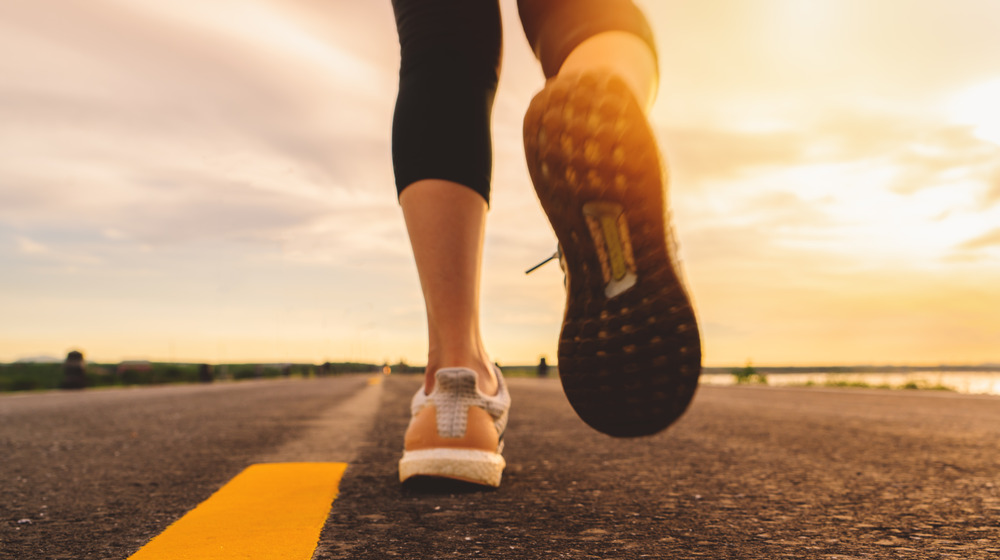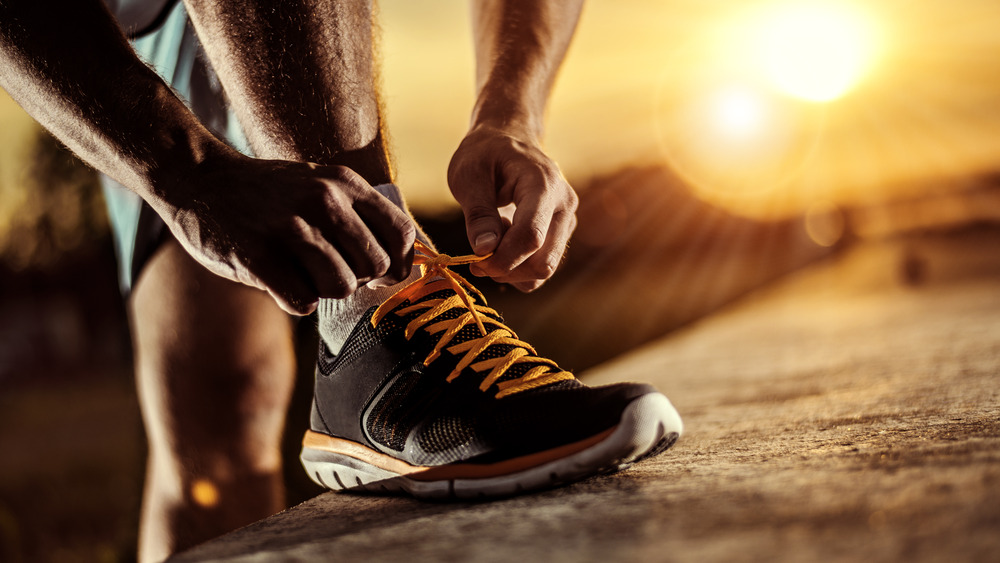Running Shoes Vs Walking Shoes: What's The Difference?
Because running and walking seem like similar exercises, it seems logical that you could wear a running shoe while walking or vice versa. However, the truth is a bit more complicated because of the biometrics involved with each exercise. While both exercises are aerobic, running is high-impact, meaning it is more stressful on the body. Walking, however, is low-impact and just about anyone can do it.
Because running puts pressure on your feet, ankles, knees, and back, you need to wear a shoe designed to bear this kind of force. Runners have a 20 to 70 percent chance of sustaining some kind of injury, while injuries from walking fall between 1 and 5 percent (via Healthline). When running, your foot strikes the ground in a different way than it does when you are walking. There are times when both feet are off the ground when you run, and when you land, the heel and ball of your feet absorb quite a bit of body weight. When you walk, you keep at least one foot on the ground, and your feet usually land heel-first, rolling toward your toes. This lower-impact movement means that weight is more evenly distributed across the foot.
Look For Cushion, Flexibility, and Weight
Both kinds of shoes need cushioning, but a good running shoe will have cushion at the points of impact — namely the forefoot and heels. A satisfactory walking shoe will provide more cushion in the arch as well as throughout the entire sole (via Prevention).
In addition, running shoes need more flexibility in the middle of the foot and the arch to support the impact of your bodyweight. Walking shoes need to be more flexible in the arch to provide support for repetitive heel-to-toe movement.
Running shoes are generally lighter than walking shoes because the sport involves faster movements along with lifting the feet. On the other hand, walking shoes tend to weigh more than their running counterparts, offering more stability for a slower pace.
It is important to replace your walking or running shoes after you put about 300 – 400 miles on them for optimal comfort and safety.


